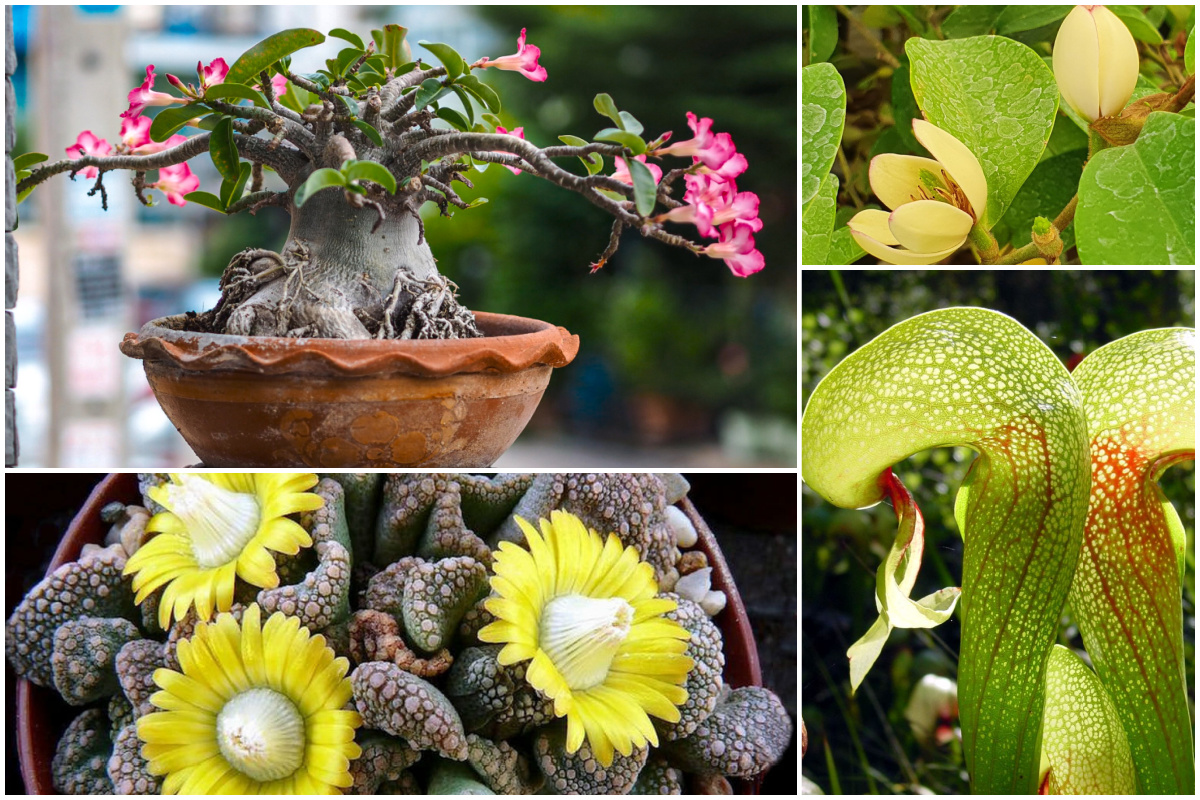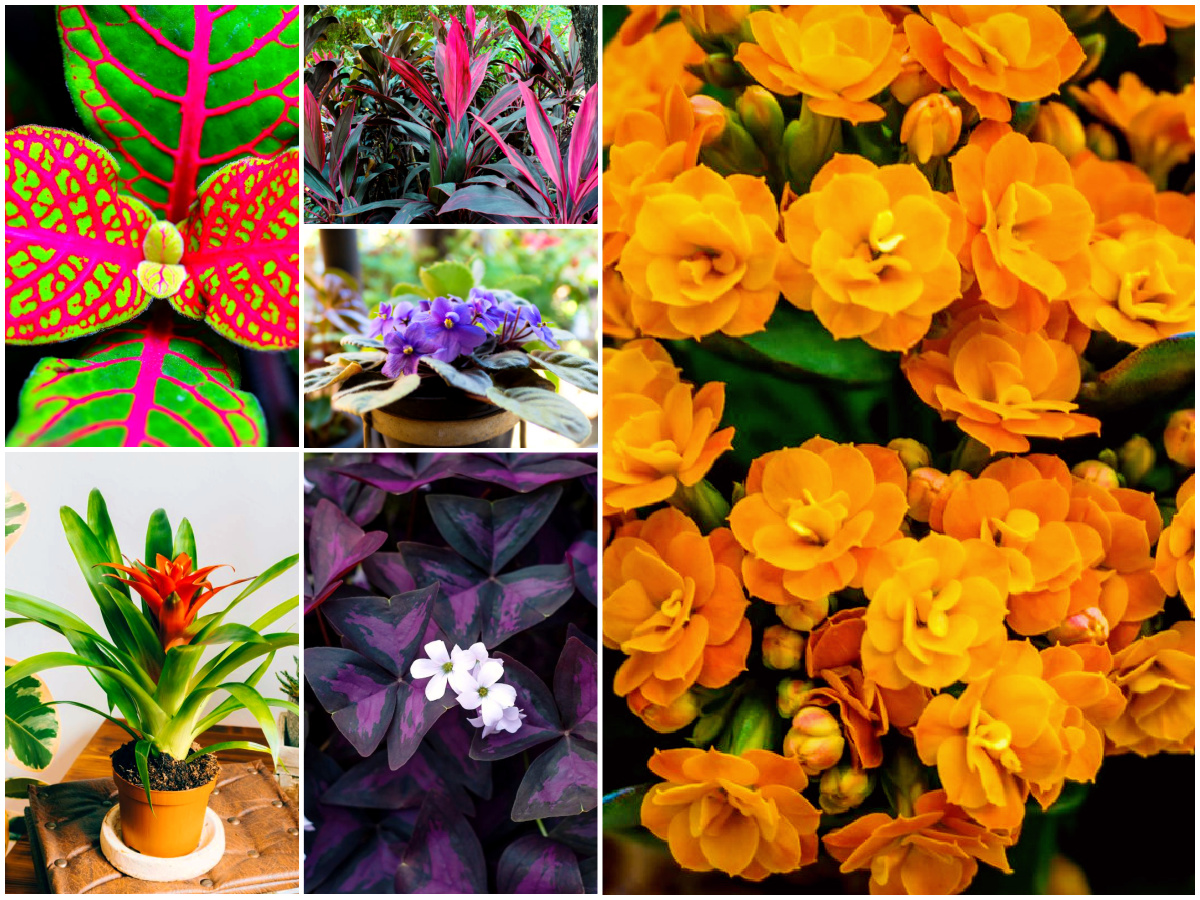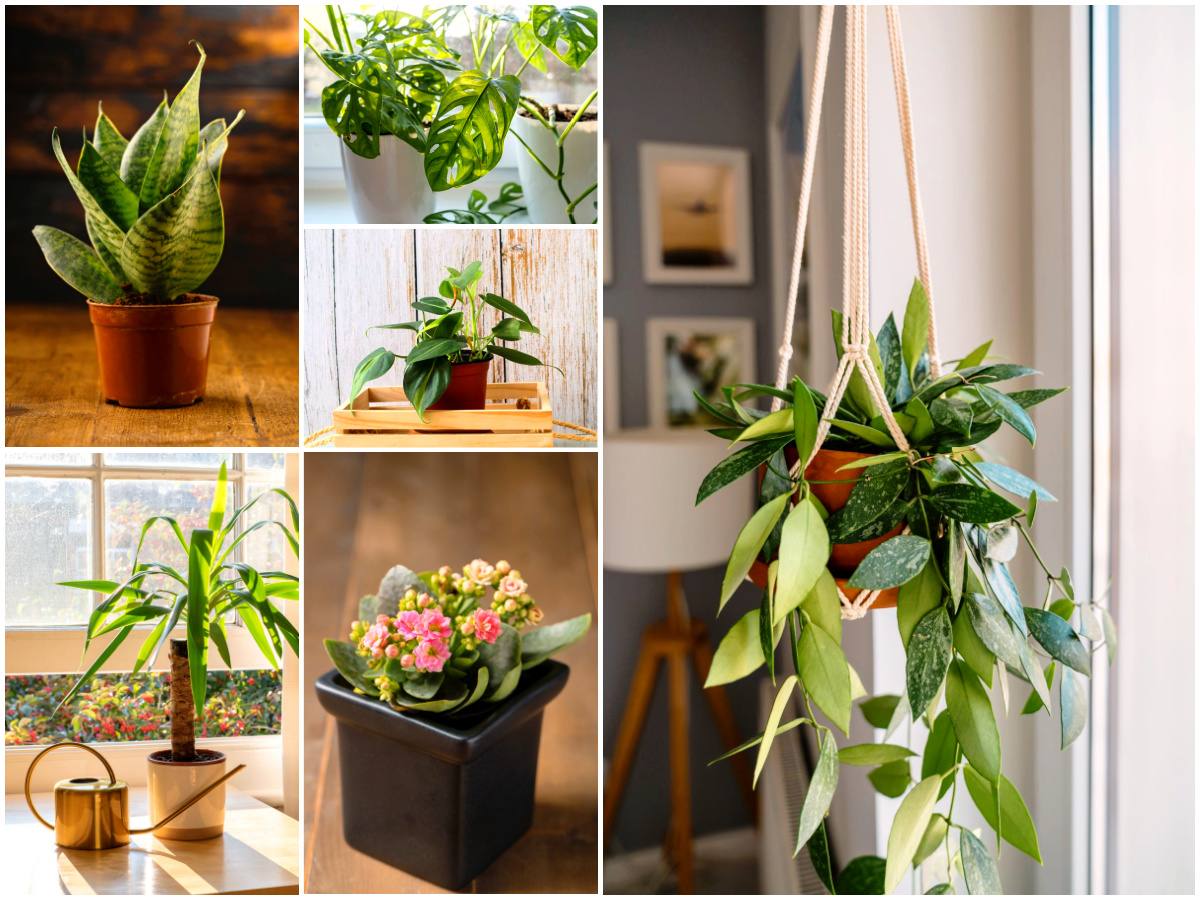Dionea muscipula, also known as the Venus flytrap, is probably the most popular carnivorous plant of all. It’s a fun impulse buy, but keeping it alive is another thing and most flytraps don’t survive for very long. Luckily, it’s not impossible to keep a Venus flytrap happy and healthy: they just need slightly different care than most houseplants.
Keep reading for everything you need to know about Venus flytrap care and growing Venus flytraps in your own home!
| Name(s) (common, scientific) | Venus flytrap, Dionea muscipula |
| Difficulty level | Moderate |
| Recommended lighting | Direct sun |
| Water | Keep moist |
| Soil type | Nutrient-poor |
Tip: Do you like carnivorous plants? Don’t forget to have a look at the care guides for the fascinating Cape sundew, spoon-leaved sundew and Mexican butterwort as well.
Venus flytrap care
As with all houseplants, it’s a good idea to keep the Venus flytrap’s natural habitat in mind if you want to figure out how to care for it. These plants naturally grow in subtropical bogs in the Carolinas (North America).
The soil in these areas is very poor in nutrients, which has led them to develop their insect-eating capabilities. The ground is almost constantly wet and few trees are able to grow. Shelter is scarce and the flytraps are exposed to high amounts of direct sunlight.
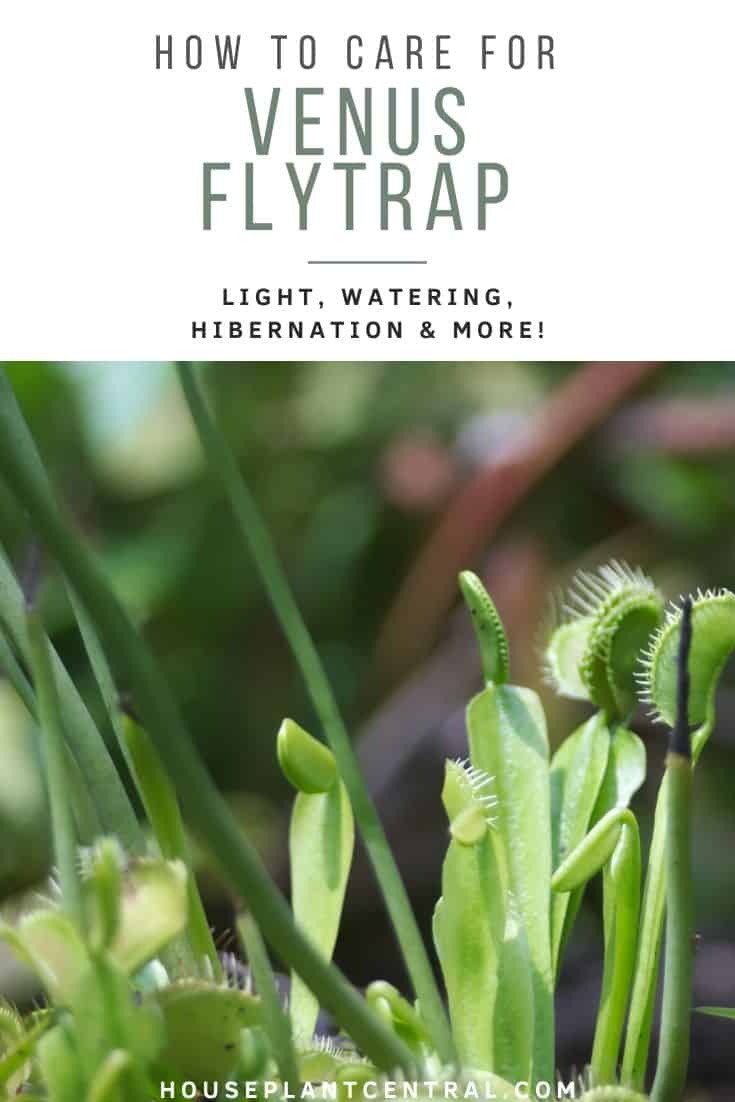
Venus flytrap light, location and temperature
Light
Because Venus flytraps aren’t sheltered by trees in their natural habitat they are used to receiving quite a bit of sun: they’re high light houseplants. This means they will appreciate a light location in the home with as much direct sun as possible. Find the sunniest windowsill you can offer!
You can even move your Venus flytrap outside during Summertime if you can’t provide a light enough location indoors.
Location
These plants naturally occur in wet environments, which means they do appreciate a bit of humidity in the home.
Watering frequently might be enough, but if you’re regularly finding dead, crispy traps you might want to move your flytrap to a more humid spot.
Temperature
Venus flytraps can survive in a wide variety of temperatures, as the bogs they grow in are subtropical.
Room temperature works well, but you can also grow them outside during Summer and they can even handle a little bit of frost.
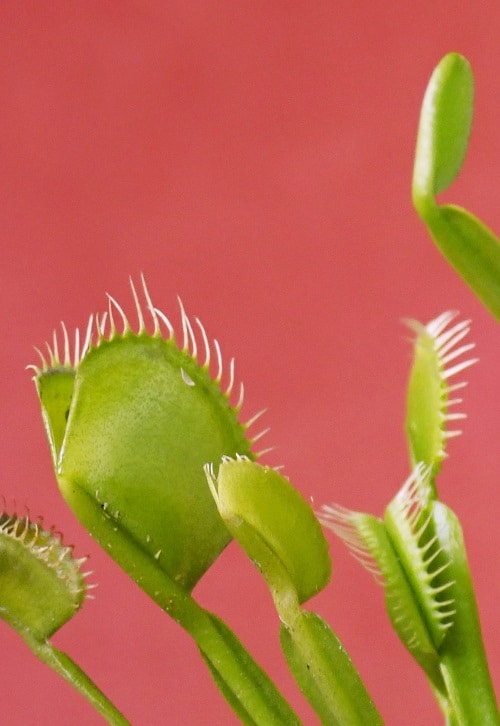
Venus flytrap dormancy
Like many other carnivorous plants, Venus flytraps need a yearly resting period during Winter. During this time the plant goes dormant, which means some or all of the traps die off and no new growth appears. Not the most beautiful sight, but unfortunately not something you can skip!
To trigger dormancy, move your Venus flytrap to an unheated room and reduce waterings to once or twice a month. Once Spring rolls around and things start to warm up again you can move the flytrap back to its normal position, which should trigger new growth in no time.
Venus flytrap soil and planting
One of the most important (and complicated) aspects of Venus flytrap care is soil.
- As discussed earlier, these plants naturally grow in nutrient-poor soil. They have fully adapted to getting their nutrients in another manner: by catching insects.
- Because of this, normal soil mixtures won’t do your Venus flytrap much good. In fact, using a nutrient-rich potting soil can kill this plant.
- Luckily, mixing your own carnivorous plant soil isn’t too tricky if you know what you need. Just combine 50% sphagnum moss and 50% perlite or sand and you’re all set.
- Because Venus flytraps appreciate very moist soil but still need some drainage, standard plastic planters with drainage holes should work well.
- Repotting can be done once a year to refresh the soil and/or upgrade the plant to a larger container if necessary.
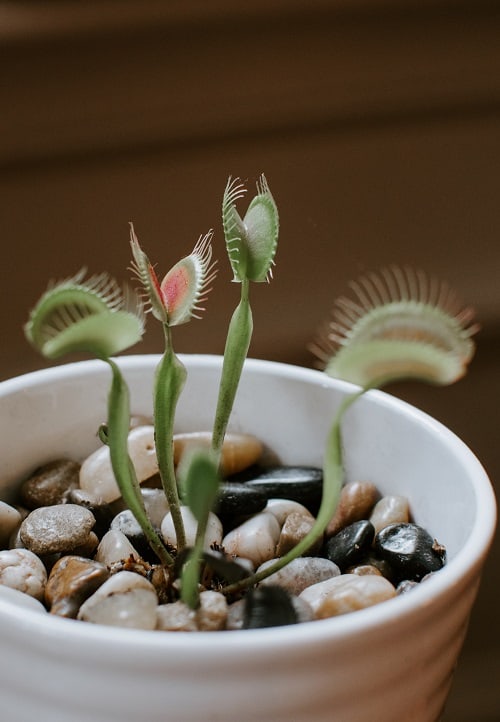
Watering Venus flytrap
Venus flytraps are used to wet feet and appreciate plenty of water. One important thing to keep in mind is that they (and other carnivorous plants) can’t handle the minerals in normal tap water. Rain water works well if you collect it, although you can also buy distilled or demineralized water and use that instead.
During the growing season, always keep your flytrap’s soil nice and moist. Watering from below is easiest: just pour water onto the tray or saucer your pot is standing on and the sphagnum moss will soak it up and transport it to your plant’s roots. Contrary to most houseplants, Venus flytraps won’t mind standing in a layer of water, so don’t hesitate to water generously!
As mentioned earlier, things are a little different during the Winter dormancy period. If your plant is dormant, reduce watering and let the soil dry out more. Watering once every two weeks or so should work well.

Venus flytrap fertilizer
Because they have adapted to catch nutrients themselves, Venus flytraps don’t respond well to regular houseplant fertilizer. Instead, you can help boost their growth by placing them outside to catch plenty of insects during Summer or feed them yourself.
To feed your Venus flytrap, place an insect (alive or dead) or rehydrated freeze-dried bloodworm in one of its traps. The traps are triggered by movement and will snap shut if the tiny hairs on the inside are disturbed. If the food is alive the trap should close soon enough, if it’s dead then help by trigger the hairs yourself.
After the trap has shut, be sure to gently “massage” the sides between your fingertips. This confirms to the trap it’s not dealing with a false alarm and causes it to fully close. And that’s it! The food will now be digested and the trap will reopen in a few days.
Did you know? Be sure to keep in mind that the traps don’t work indefinitely and closing them takes the plant quite a bit of energy. Although triggering them with your fingers is pretty fun, this is unfortunately not a good idea. A trap will become inactive after around five closings and thereby loses its ability to catch prey.
Buying Venus flytrap
Venus flytraps are quite popular but not always the easiest or cheapest plants to find. All Venus flytraps are the same species (Dionaea muscipula), but there are various cultivars out there that might be more or less expensive than others.
Popular Dionea muscipula cultivars include ‘B52’ (which has very large traps), ‘Akai Ryu’ (with dark red traps) and ‘Fused Tooth’ (whose name speaks for itself!)
Is Venus flytrap toxic to cats and dogs?
Nope! If your pet eats your Venus flytrap this might result in a tummy ache, but it shouldn’t do more damage than that.
Cover photo: Venus flytrap by es-de-we (cropped, CC BY-NC 2.0)

